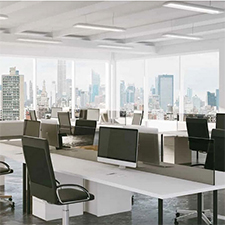
Understanding the Economics in LED Replacement Projects
Chuck Ross
Energy savings are a given, regardless of the type of LED lamps or fixtures used, but actual dollar savings and the resulting payback periods can vary, as researchers at the University of Michigan's Center for Sustainable Systems, part of the School for Environment and Sustainability, discovered. The team evaluated the economics of several styles of LED lamps and fixtures to understand the variables to consider in any client’s retrofit project.
In all, the study looked at six replacement options for linear, recessed lighting systems, including one fluorescent and five LED products. The LED offerings all outperformed the T8 fluorescent replacement tube, but the results were more nuanced when comparing the solid-state selections against each other. Among their findings:
In all, the study looked at six replacement options for linear, recessed lighting systems, including one fluorescent and five LED products. The LED offerings all outperformed the T8 fluorescent replacement tube, but the results were more nuanced when comparing the solid-state selections against each other. Among their findings:
- Plug-and-play LED tubes that can be used as direct replacements for fluorescent products without any other fixture modifications could help speed LED adoption, due to the ease of installation, but the fixture’s ballast could end up failing before the lamp.
- Hybrid LED tubes, which work in both an existing, ballasted fixture or one where the ballast has been removed, have the lowest upfront cost when the existing ballast is still usable.
- Direct-wire LEDs are the least expensive to operate and maintain, but installation requires hiring an electrician to retrofit existing fixtures by removing the ballast and installing new lampholders, which adds to upfront costs.
- Buying new LED luminaires with replaceable lamps costs less than going with fixtures featuring integrated, non-replaceable lamps – though integrated units come with more design options.
- Using replacement tubes, whether or not fixtures need retrofitting, all result in savings over time, versus fluorescents, thanks to energy savings and reduced maintenance. Using new fixtures, however, can lead to higher life-cycle costs based on the upfront expense of buying the luminaire.
Photo courtesy of TCP Lighting



